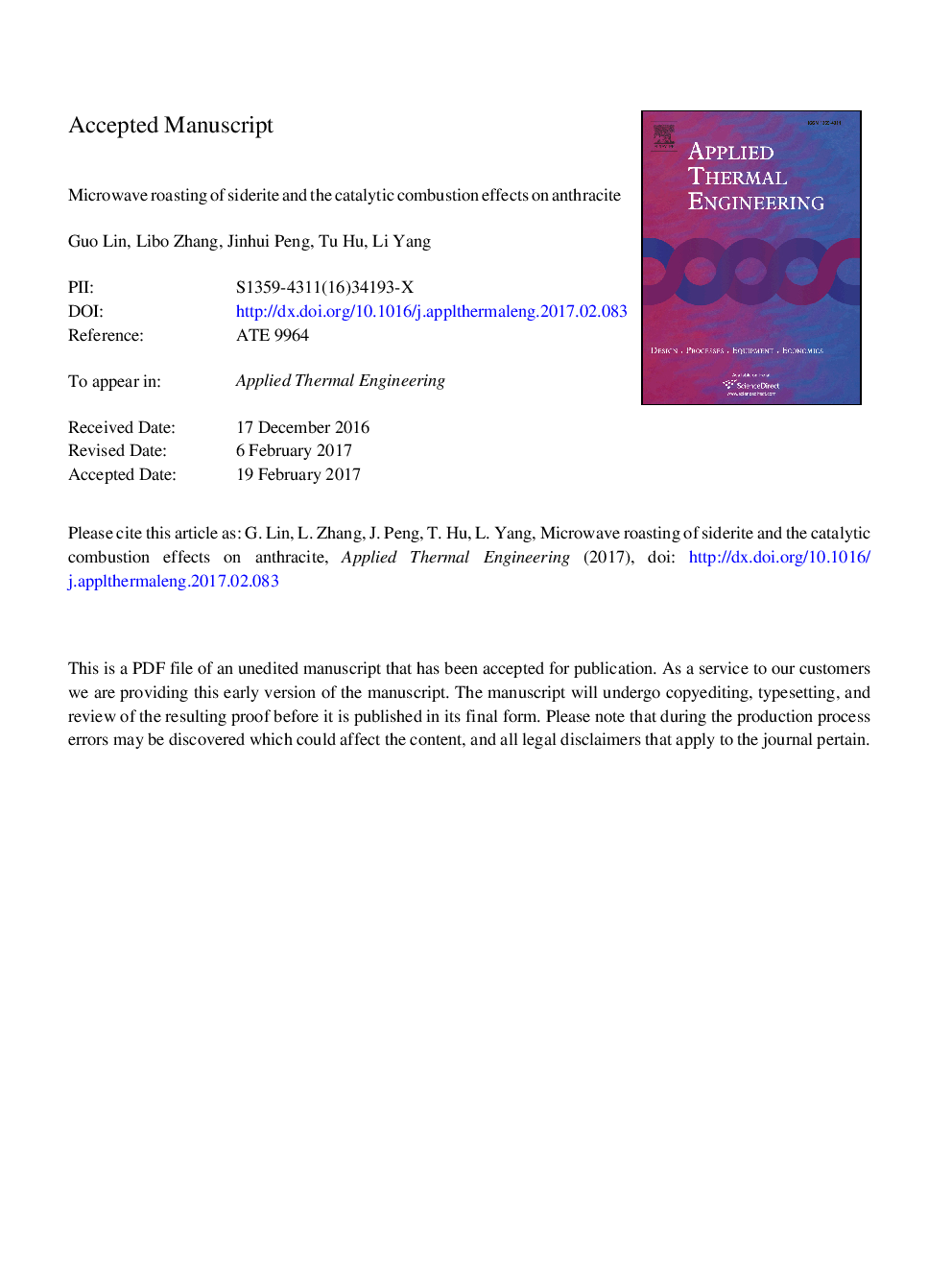| Article ID | Journal | Published Year | Pages | File Type |
|---|---|---|---|---|
| 4991558 | Applied Thermal Engineering | 2017 | 30 Pages |
Abstract
Microwave roasting of siderite at 800 °C with different holding times and the catalytic combustion effects on anthracite are investigated. The heating rate curves indicate that siderite can be heated in microwave field, and the heating rate increases considerably when FeCO3 almost decomposes and oxidizes to Fe3O4 and Fe2O3. The combustion rate increases by 31.74% with 0.5% roasting products of siderite as catalyst at a holding time of 40 min using microwave roasting. The Fe2O3 content in roasting products increases with microwave holding time. The size distribution results indicate that small particles cluster together and the amount of large particles increases with holding time, thereby the decreasing catalytic effect on anthracite at holding time above 40 min. The thermogravimetric-derivative thermogravimetric (TG-DTG) analysis results indicate that ignition temperature, combustion reactivity and burnout index significantly improve with catalyst addition. Differential scanning calorimeter (DSC) analysis results show that heat release of anthracite with catalyst increases by 10.09% compared with that of raw-anthracite.
Related Topics
Physical Sciences and Engineering
Chemical Engineering
Fluid Flow and Transfer Processes
Authors
Guo Lin, Libo Zhang, Jinhui Peng, Tu Hu, Li Yang,
